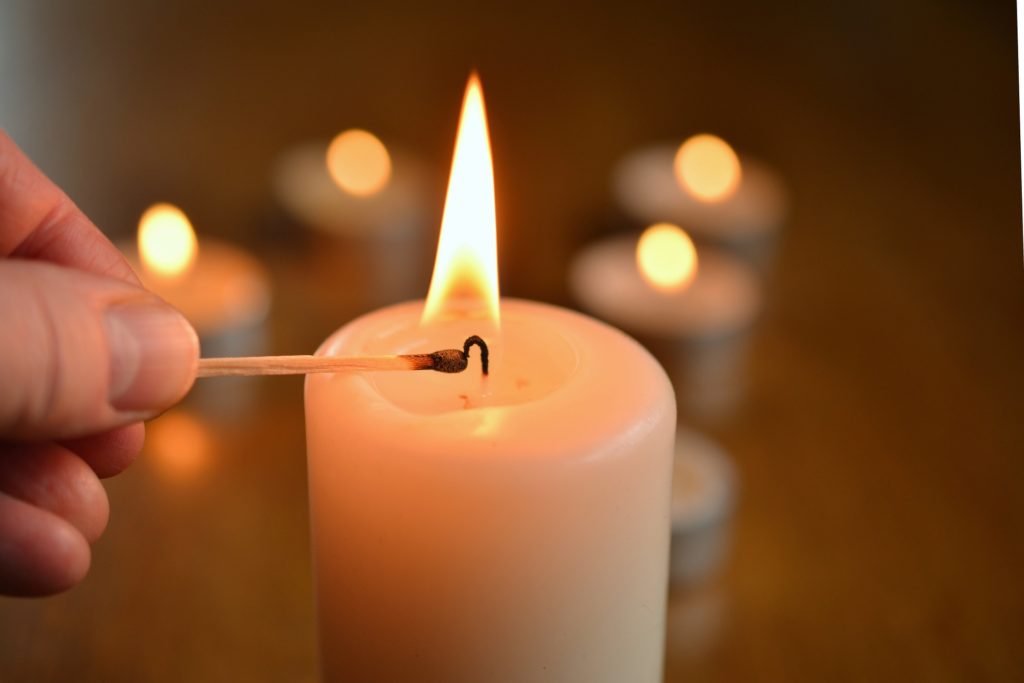After the dust begins to settle following a major loss, people often struggle to return to their routines in a way that honors and makes space for their bereavement. Grief rituals can help people find meaning as well as heal.
Rituals are an important way people can adjust to the loss of a loved one, develop an ongoing connection with the deceased and can help create a connection to your community and support system.

Grief rituals provide several benefits. They:
- Promote acceptance
- Provide emotional comfort
- Contain and/or express intense feelings
- Continue an emotional bond with the person who died
- Provide ways to connect with your social support like friends and family
- Provide a sense of order and control around your grief
- Provide a way to develop meaning from the loss
Adjusting to the Loss of a Loved One
The loss of a loved one can throw you off your course with an overwhelming number of emotions as well as a layer of thick grief fog that causes you to slow down. Living with grief fog is like driving through an area where the fog is so thick that it inhibits your ability to see. The only thing to do is slow down, press on the brakes or even stop completely.
Beyond losing the person you loved, the absence of the rituals you shared is another loss in itself. There are so many rituals that you may have taken for granted: waking up and saying “good morning,” enjoying a cup of coffee while sharing about your plans for the day, giving a hug, receiving a hug, check-in texts during the day, someone to call when you’re feeling upset, your go-to for a ride to the doctor’s or the person you know has your back and would be there for you no matter what. And there are rituals of greater intimacy — sitting together on the couch, laughing together, sharing favorite books, debating about politics, cooking dinner and even folding laundry together, kissing goodnight. These rituals were developed over a long course of time, yet all ended with the death of your loved one.
Developing an Ongoing Symbolic Connection
Although you can’t bring the person back, you can choose to carry on certain rituals. If drinking coffee together was a ritual, try talking out loud to your loved one’s photo, or even their coffee mug. Share your thoughts about yesterday, today and tomorrow.
A grief ritual often involves a meaningful symbol. These symbols can be physical, like a photo of the person who died, or nonphysical like music or prayers. Engaging in rituals of grief validates the loss while still helping the bereaved acknowledge that their relationship with the deceased can continue on symbolically
Examples of Ongoing Grief Rituals
- Lighting a candle every day at a certain time
- Visiting the gravesite or area that ashes were spread
- Talking to a photo of the deceased
- Wearing your loved one’s item of clothing
- Creating a Memory Box
- Performing acts of service in their honor
- Going to their favorite place or shared favorite place
- Doing yearly remembrance activities/celebrations
- Engaging in Art/ Creative expression in their memory (painting, writing poetry, singing)
- Writing a letter to your loved one
- Planting something in remembrance
- Using an everyday item of the deceased (something that brings you comfort) such as a coffee mug, or wearing their slippers, watch, wedding ring or robe)
- Creating a garden or naming a plant after your loved one
- Listening or dancing to your favorite song
- Meditating
- Sharing stories of loved one with friends and family
- Creating your own ritual
Create a Connection
Creating emotional connections can significantly impact your healing. In doing so, it is important to find an emotionally safe space, where you can trust others to stay with you through difficult emotions, respect your feelings and honor your grief.
Joining a grief support group is a great way to provide yourself a safe space to check in with your grief in the company of other people who are walking alongside you. It is a way to be a part of a community and build your network of people who can support you during a challenging time in your life.
The practice of showing up to a group weekly is a practice of checking in with your grief as well as creating a new ritual. Group members often share that there is comfort in the ritual of attending group, describing the regular Thursday night meeting as an “island of time in the week.” Members say that they tell their friends and family that they are not available for shows, dinners and gatherings on Thursday night because they value the importance of this ritual, their group. Being a part of a grief group provides comfort, routine, stability, support and connections. Making these new connections with your community and support system allows for healing while walking the grief journey.
Be true to yourself. Individualize your ritual to fit the person you are today. Invite new rituals and/or find ways to carry out old ones. Build connections with your community and support system, and remember you don’t have to do this alone! Reach out, ask for help, join a group, get support.

